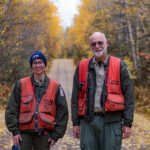National Forum on Biological Control: A Long Time In Coming
By Bob Simpson, NASF Forest Health and Science Committee Staff Biological control (biocontrol) is the purposeful use of natural enemies of dangerous, damaging and otherwise undesirable pests through parasitoids, predators and pathogens to reduce the risk and damage caused by harmful organisms to acceptable levels. It is not a new science; early uses include ancient [read more]








